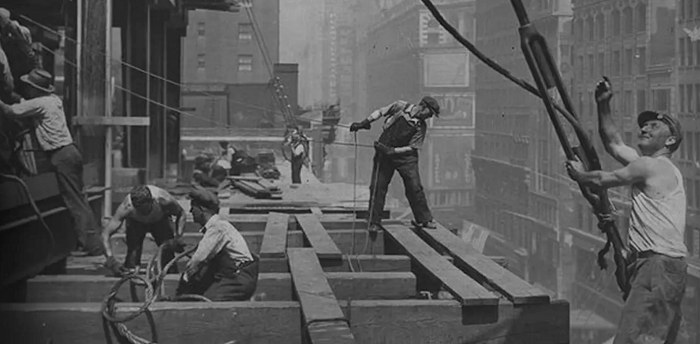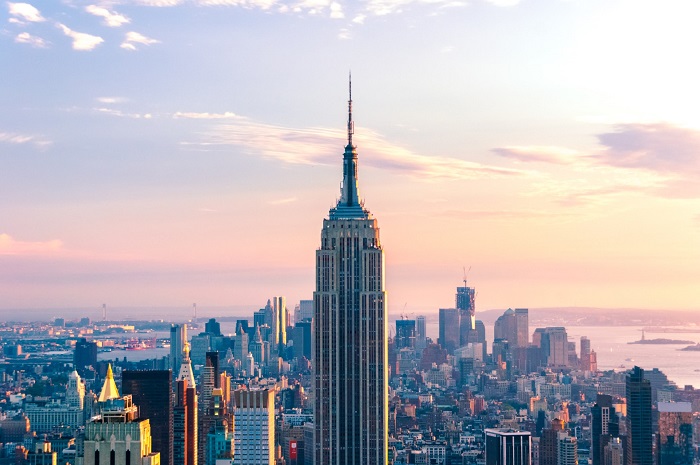ISABEL RUBIO ARROYO | Tungsteno
The Empire State Building, one of the most legendary skyscrapers on the New York City skyline, was built in record time. In just one year and 45 days, more than 3,400 workers erected what would be the tallest building in the world for 40 years. We look at the construction of this iconic megastructure visited every year by millions of tourists, the headquarters of major companies and the backdrop for iconic films shown on the big screen.
A mega-construction in record time
After the demolition of the famous Waldorf–Astoria Hotel on Fifth Avenue in 1929, the Empire State Building was erected in its place. Designed by the American architect William F. Lamb, it was the world's first building with more than 100 floors. Construction began in 1930 and progressed at breakneck speed, so much so that the structure rose at a rate of four and a half storeys a week and work was completed in just over a year. Some 3,400 workers, paid about $15 a day, completed the first 30 floors before certain details of the ground floor were finalised. At least five workers were killed during construction from slip and fall accidents or being struck by objects.
The iconic 102-storey building was inaugurated on 1 May 1931, when President Herbert Hoover pressed a button from Washington to turn on all the skyscraper's lights. From that moment on, it became a major tourist attraction. Thousands of people flocked to see the world's tallest building and paid 10 cents to peer through a telescope at New York City from on high. In just six months, more than $3,000 was collected in nickels and dimes.

Some 3,400 workers completed the first 30 floors before certain details of the ground floor were finalised. Credit: Empire State Building.
From corporate headquarters to wedding and film set
Despite tourism, the skyscraper initially suffered from the effects of the Great Depression. Renting the large office space was not easy and some dubbed it the “Empty State Building”. But it eventually became profitable. Some 15 years after its opening, it had become the headquarters of large organisations and housed some 15,000 employees.
While it was already the tallest building in the world at that time, it grew even taller when a large antenna of more than 67 metres and 60 tons was added in 1950. Counting the spire and the antenna, the Empire State Building reaches a majestic height of 443 metres. It is currently the seventh tallest building in New York, the ninth tallest in the United States and the 54th tallest in the world. It has 1,872 staircases and 73 lifts to reach its 102 floors.
The Empire State Building has been the scene of weddings, films and curious competitions. In 1969 it was the start/finish line of the Daily Mail Trans-Atlantic Air Race, in which 360 men and women flew jets, propeller planes and helicopters between London and New York. Almost a decade later, the first annual Empire State Building Run-Up was held. Each year participants compete to be the fastest up the hundreds of steps to the 86th Floor Observation Deck.

The Empire State Building has been the backdrop for many movie weddings. Credit: Empire State Building
The challenge of energy efficiency
In the late 20th century, $65 million worth of work was undertaken to modernise the building. As well as installing new lifts and air-conditioning systems, all 6,514 windows were replaced. According to the owners, this is the largest window replacement ever authorised by the Landmarks Commission. Among the improvements was the complete restoration of the lobby to the building's Art Deco modernist design and the faithful recreation of its original gold and aluminium ceiling. It took the craftsmen 20,000 hours to complete the renovation of this masterful mural, longer than it took to build the skyscraper; in other words, 833 days or approximately two years and three months.
One of the owners' most ambitious goals has been to improve the energy efficiency of the skyscraper. The owners say they have made "a series of technological, architectural and systems optimisations that have made it a global model for retrofitting existing buildings". In addition to automated LED lighting being installed to reduce the energy required inside the building, reflective barriers were added behind each steam radiator to allow heat to better enter the building rather than being sent outside.
The owners of the Empire State Building have invested millions of dollars to modernise the building. Credit: The B1M.
The Empire State Building received the US Environmental Protection Agency's Green Power Leadership Award in 2011, and has also won many other accolades. For example, it ranks first on the American Institute of Architects' list of America's Favorite Architecture, beating out other national landmarks such as the White House and the Golden Gate Bridge.
Beyond being the headquarters of major companies such as LinkedIn and Shutterstock, it is considered one of the seven greatest engineering achievements in American history, along with the Hoover Dam and the Panama Canal, according to the American Society of Civil Engineers. All these achievements and its eye-catching lighting system—capable of displaying more than 16 million colours—make the Empire State Building the most iconic skyscraper in New York and one of the most famous on the planet. While in less than 50 years its observation deck had already welcomed more than 50 million visitors, this megastructure now receives more than four million tourists every year.
· — —
Tungsteno is a journalism laboratory to scan the essence of innovation. Devised by Materia Publicaciones Científicas for Sacyr’s blog.
